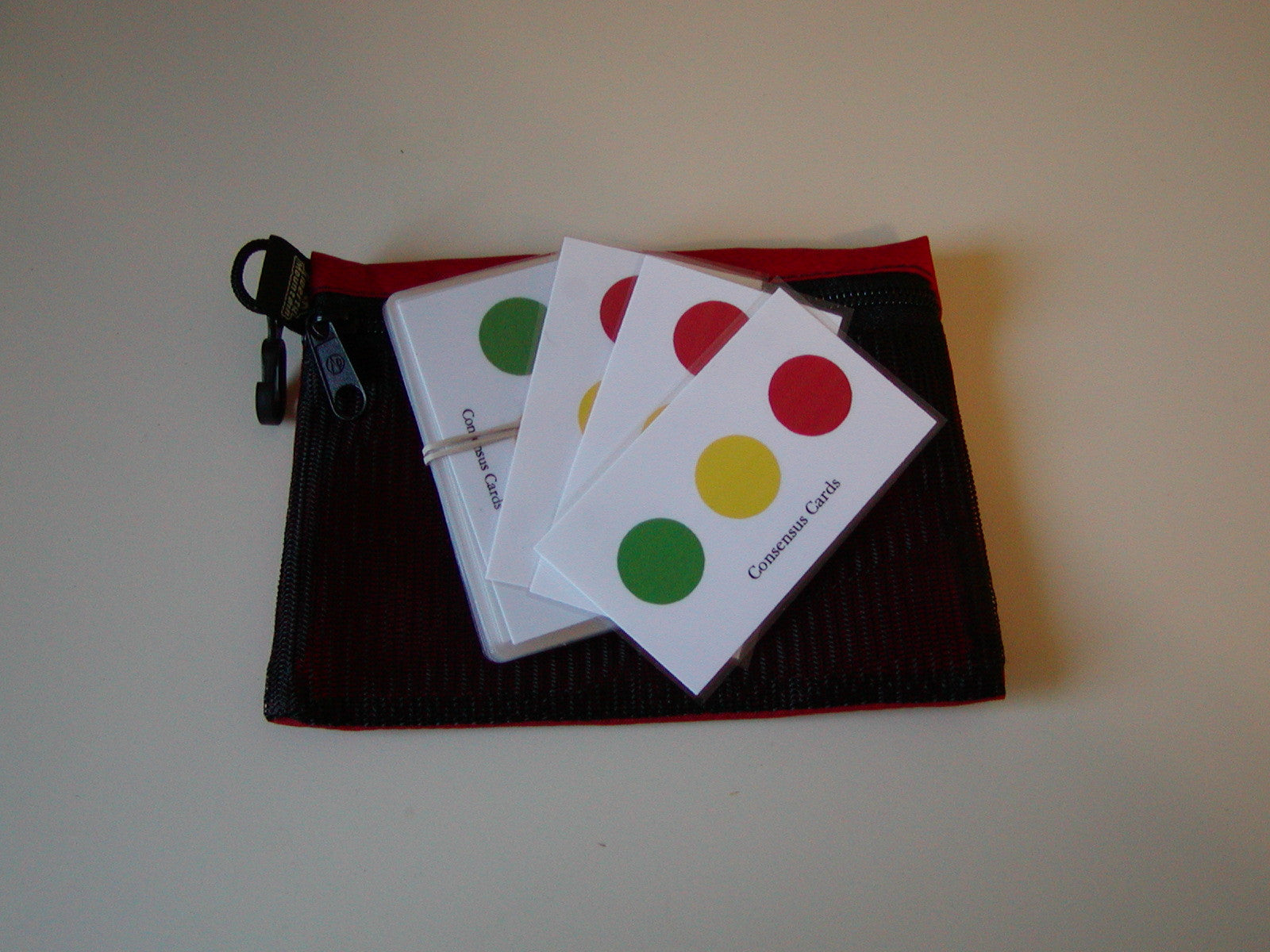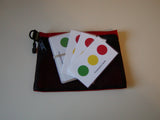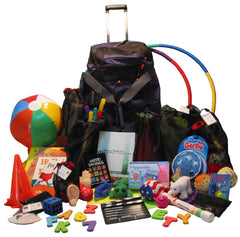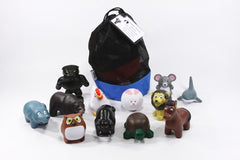Consensus Cards
Training Wheels Gear
Consensus Cards: Visual Decision-Making for True Group Agreement
Empower your group to make decisions that truly reflect everyone's voice with Consensus Cards. Designed to promote consensus rather than simple majority rule, this deck of 35 laminated stoplight cards offers a clear, visual way for groups to express agreement, questions, or concerns.
Key Features:
-
Clear Visual Voting: Each palm-sized card features three colored circles arranged like a stoplight—red, yellow, and green—making it easy for participants to communicate their stance.
-
Simple Definitions: The back of each card explains the colors: red means disagreement, yellow signals a need for more information or questions, and green indicates agreement.
-
Inclusive Decision-Making: After a proposal, each member votes by holding up their card with two colors covered, revealing only their choice. This allows quick, transparent feedback from everyone.
-
Facilitates Dialogue: If anyone votes yellow, the group addresses their questions before proceeding. If red, the person explains their concerns and suggests compromises.
-
Familiar and Intuitive: Using stoplight colors leverages a universally understood system, making it easy to adopt.
-
Versatile Use: Ideal for introducing consensus in low-impact decisions and scaling up to more complex group choices throughout the day.
Why We Love It:
Consensus Cards transform group decision-making by ensuring every voice is heard and respected. This tool encourages thoughtful discussion, reduces conflict, and builds stronger, more collaborative teams. Facilitators appreciate how quickly it helps groups move from proposal to agreement with clarity and inclusivity.






